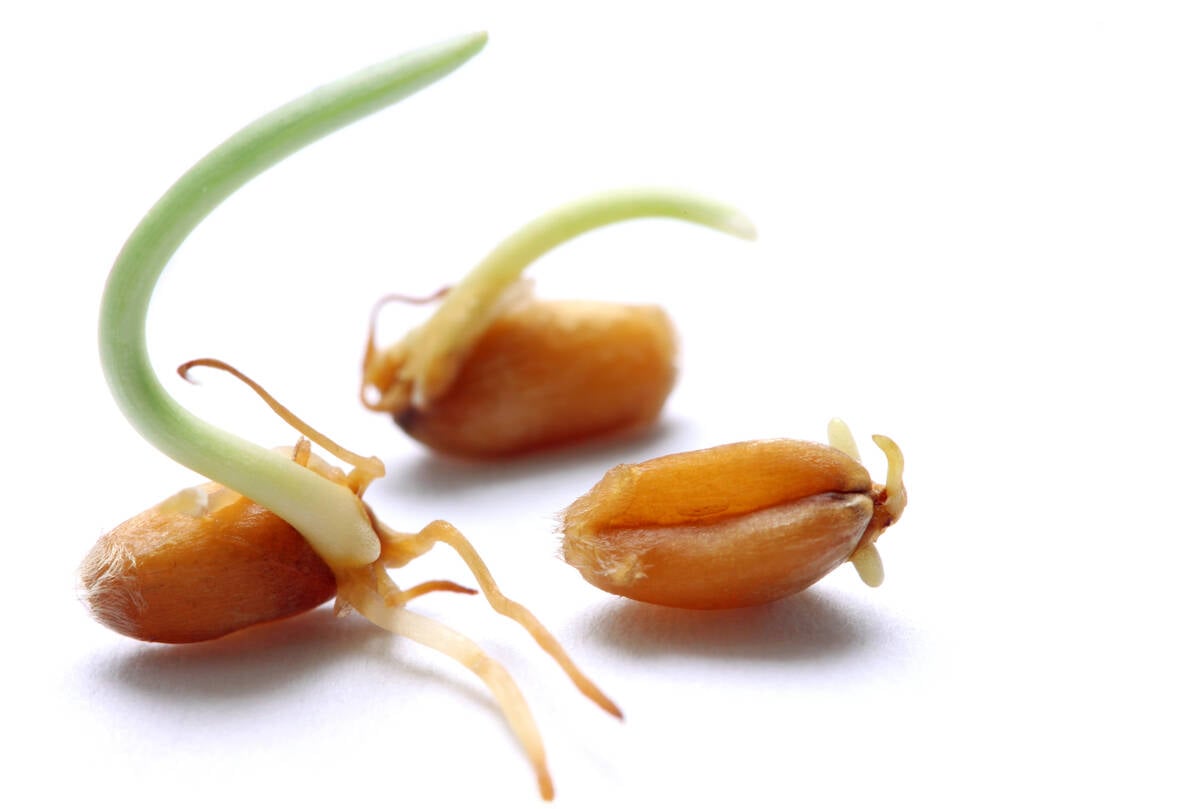RED DEER — El Nino is back, and if global weather forecasts are right, crops and grazing conditions should be in good shape this year.
After a cold, wet fall that ruined the western Canadian harvest, this growing season will be warmer and drier, said climatologist Art Douglas, a professor emeritus at Creighton University in Nebraska.
Warm water on the equator is spreading west from South America, which indicates a moderate El Nino on the heels of one of the most powerful in 100 years, he told the Alberta Beef Industry Conference, held Feb. 15-17 in Red Deer.
Read Also

Manitoba farmers fight sprouted wheat after rain
Rain in mid-September has led to wheat sprouting problems in some Manitoba farm fields.
“It is very unusual to have an El Nino from 2014-16 and all of a sudden we have a brand new El Nino in 2017,” he said.
“You would probably have to go back 150 years to see two El Nino events this close to each other.”
About 180 percent of normal precipitation hit Western Canada while in the clutches of La Nina. The weather phenomenon also broke the drought in California.
Satellite observations of the crop growing regions around the world show the promise of good crops and grazing conditions.
South America, India and China can expect good crops in 2017 because of timely rain.
However, Australia suffers under El Nino, and drought is the result. Wheat crops suffer under these conditions, and pastures turn dry.
Eastern Europe in the Black Sea region appears to be heading for a drier and warmer than normal summer.
Dry pockets are showing up in the United States from Texas to Virginia, but the winter wheat areas have had normal precipitation.
Canada is developing dryness in the northern Rockies that spreads into the northern U.S. Plains.
Douglas predicts that spring temperatures will be above normal from British Columbia to Manitoba, but a cold April is expected with average temperatures 2 C below normal. May will be warm.
“With that coolness in April in contrast to last year when it was warm, it looks like things are probably going to be delayed in terms of planting here in Canada,” he said.
He is forecasting a drier, warmer summer by about .5 to 1 C more, which is not a bad thing, considering the excessive amount of moisture last fall.
Eastern Manitoba to Ontario should expect near normal temperatures and precipitation.
“With a moderate to major El Nino developing, we really have to be cautious in Canada for a dry fall and upcoming dry winter again,” he said.















